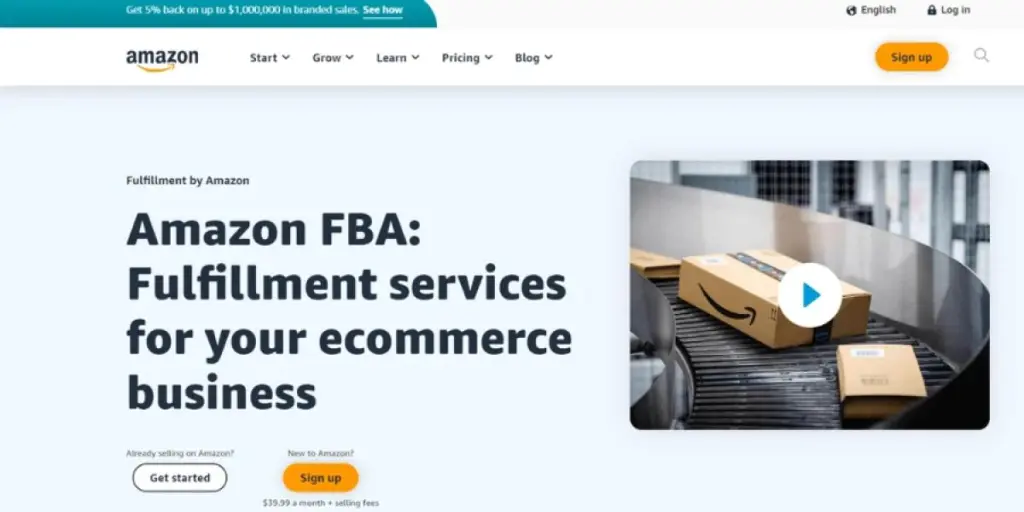We can’t deny that Amazon remains the most prominent eCommerce retailer in the US. As of June 2022, the company holds the largest market share at 37.8%, significantly surpassing its closest competitor, which only has a 6.3% market share.
If you’re an online entrepreneur, there should be no question in your mind that selling via Amazon is a lucrative way to grow your business. But is it profitable? If you’re an Amazon FBA seller, one of your primary concerns is Amazon FBA seller fees.
In this article, we’ll reveal the true cost of selling on Amazon, including the latest fulfillment, storage, and miscellaneous charges. Understanding these fees will help you achieve maximum profit from your products.
Let’s begin.
Understanding Amazon FBA Fees
Utilizing Amazon FBA (Fulfillment by Amazon) can be a game-changer when selling on Amazon. With FBA, you can delegate the hassle of order fulfillment, shipping, and customer service to Amazon, allowing you to focus on growing your business.
However, it’s essential to understand the various fees associated with Amazon FBA to ensure you can effectively manage your costs and maximize your profits. Here’s a quick overview:
Fulfillment Fees
This is the price you pay to have Amazon take care of packaging and shipping your products to customers. These fees are calculated based on factors such as the size and weight of your items, pick and pack operations, and the shipment’s destination. Amazon provides clear guidelines and fee schedules to help you accurately estimate the fulfillment costs for your products.
Storage Fees
With FBA, Amazon stores your inventory in its fulfillment centers until a customer places an order. Storage fees cover the cost of housing your products in their facilities. They can vary based on the time of year, the size and weight of your inventory, and whether your products fall into the standard or oversize category.
Referral Fees
Referral fees are a standard part of selling on Amazon, whether you choose FBA or handle fulfillment yourself. These fees are a percentage of the item price and vary based on the category in which your product is listed. They cover the cost of Amazon providing a platform for you to reach millions of potential customers, customer support, and various marketing opportunities.
Miscellaneous Fees
In addition to the primary fees mentioned above, there are other miscellaneous fees you may encounter as an FBA seller. These fees can include labeling fees if your products require additional labeling or prep service fees if your items need specialized packaging. Returns processing fees may also apply when customers send back products. If you need to remove products from Amazon’s warehouses, you’d also be charged a removal fee.
Amazon FBA 2023 Fulfillment Fees
Also called the “pick and pack” fee, Amazon FBA’s fulfillment fee is charged per unit item and depends on the item’s category, size, and weight.
- Category: Items can be classified either as apparel, non-apparel, and dangerous goods
- Product Size and Weight: Refers to the actual unit size and weight, which is used to classify your item into product tiers
- Dimensional weight: Refers to the space occupied by your product in relation to its actual weight. You can have a lightweight item that takes up significant space. In this case, the dimensional weight will be the basis of computation.
How to Determine Product Size Tiers
The following table shows the measurements that define the category of your item.

First, determine the actual volume and dimensions of your item. Measure its unit weight and dimensional weight. Use these values and the table above to determine the product size tier.
Once you know the product size tier of your items, you can check the table below to determine their fulfillment fee.
Category: Standard-size Products
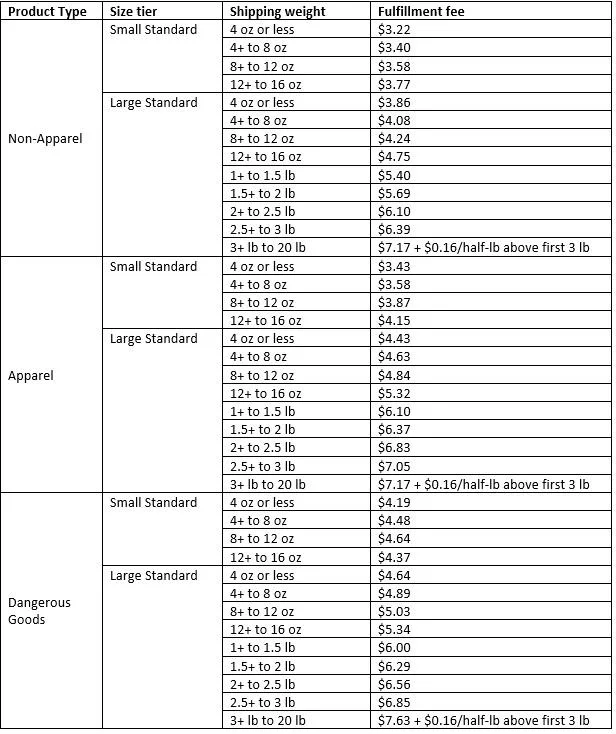
Category: Oversize Products

Let’s consider a couple of examples to understand better how fulfillment fees are calculated.
Example 1: Small, lightweight item
Imagine you’re selling a small, lightweight item, such as a mobile device case. The dimensions of the case fit within the “small” size tier, and it weighs 2.88 oz. Based on Amazon’s fee schedule, the fulfillment fee for this item might be $3.22.
Example 2: Small, heavy item
Suppose you’re shipping another small item, a flat iron, which is small in dimension but weighs 3.35 lb. It will be classified as a large standard size and charged $7.33 ($7.17 for the first 3 lb plus $0.16 for each succeeding 0.5 lb).
Example 3: Large, heavy item
Consider a large, heavy item, such as a computer monitor. The dimensions of the package classify it as “large oversize,” and it weighs 41 pounds. The fulfillment fee for this item could be $89.98.
Amazon Storage Fees
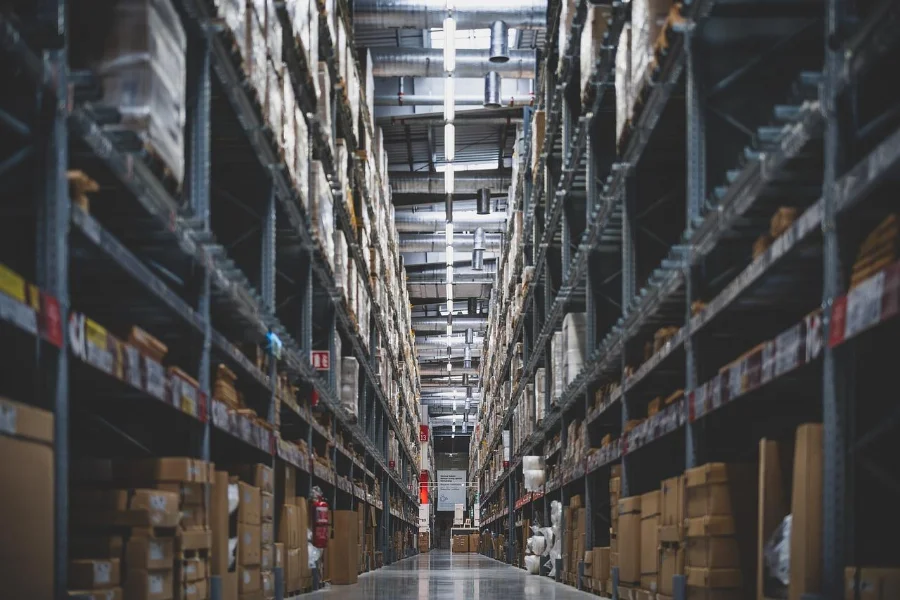
To encourage sellers to maintain efficient inventory management, Amazon charges storage fees for items in their fulfillment centers. The company wants to ensure sellers don’t occupy excessive storage space for prolonged periods. Sellers should be able to maintain a healthy balance between their inventory levels and customer demand.
Here are the types of storage fees Amazon charges:
- Monthly inventory storage fees – standard charges calculated based on the volume of space your inventory occupies per cubic foot per month. Rates vary depending on the time of year.
- Aged inventory surcharge – applies to sellers with inventory aged 181 days and over. The fees are calculated every 15th of the month and included in the monthly inventory fees. Previously called long-term storage fee.
- Inventory storage overage fee – applies to any inventory that exceeds the allowed capacity limit. It’s calculated based on the number of days the capacity has been exceeded and is charged at $10 per cubic foot per month based on daily average volume. To monitor your capacity limits, check the Capacity Monitor at the bottom of your FBA Dashboard.
- Extra–large FBA inventory – a storage type offered to sellers whose items exceed the oversize storage limits. These are items 70-96 inches long and classified as SIOC (Ships in Own Container).
Here are the monthly inventory storage fees:

Dangerous goods items require special handling and are charged the following fees:

Tips for managing and minimizing storage fees
To effectively manage and minimize storage fees, consider the following tips:
- Monitor and forecast demand: Analyze historical sales data and market trends to forecast demand accurately. This helps you maintain optimal inventory levels and avoid excess stock.
- Utilize inventory management tools: Leverage Amazon’s inventory management tools to monitor your inventory, identify slow-moving or stagnant products, and make data-driven decisions.
- Implement inventory cleanup strategies: Conduct regular inventory cleanup campaigns to remove slow-selling or non-profitable products from Amazon’s fulfillment centers. This helps reduce storage fees and frees up space for more profitable inventory.
- Optimize packaging and dimensions: Ensure your products are packaged efficiently to minimize wasted space. Utilize packaging materials that protect your items while optimizing storage space.
- Consider long-term storage implications: Regularly review your inventory to identify items approaching the long-term storage fee assessment period. Take proactive steps to sell or remove these items before incurring additional charges.
Amazon Referral Fees
Amazon charges a percentage fee, dubbed the referral fee, for providing sellers access to their vast customer base and various selling tools. They are calculated based on the item price, which includes the product price and any shipping or gift-wrapping charges.
There are different referral fee percentages for different product categories. Here are some of the most popular categories:
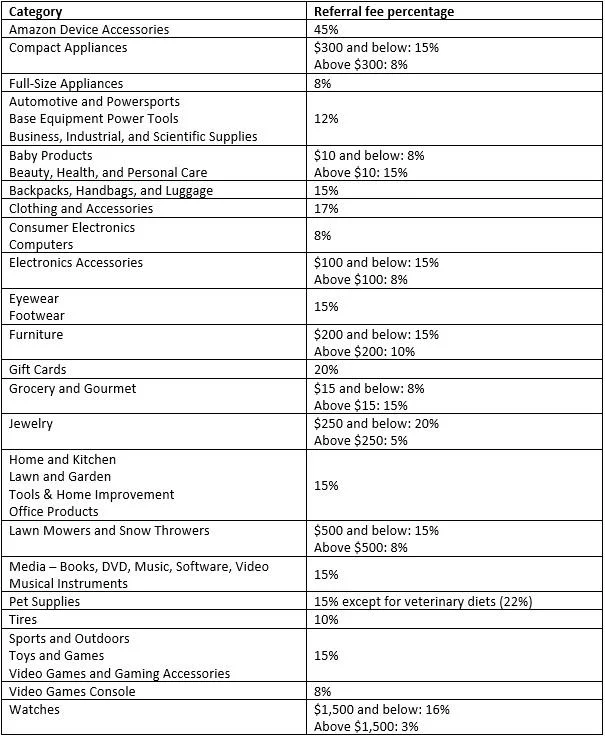
For any other items that don’t fit any Amazon Category, an Everything Else category is provided, which charges a 15% referral fee. Almost all categories also have a minimum referral fee of $0.30.
By understanding the referral fees charged to your category, you can make informed pricing decisions that optimize your profitability on the Amazon platform.
Amazon Selling Plan
Aside from the referral fee, Amazon charges either a per item sold or a fixed monthly fee as your base selling plan. You can sign up as an Individual seller and pay $0.99 for each item sold, or you can sign up as a Professional Seller and pay a flat fee of $39.99 per month, regardless of the number of units sold.
You can opt to register as an individual seller if you sell less than 40 units a month. However, note that you won’t be able to access Amazon’s Advanced Selling Tools or advertise on their platform.
Multi-Channel Fulfillment (MCF): Selling Products Outside of Amazon
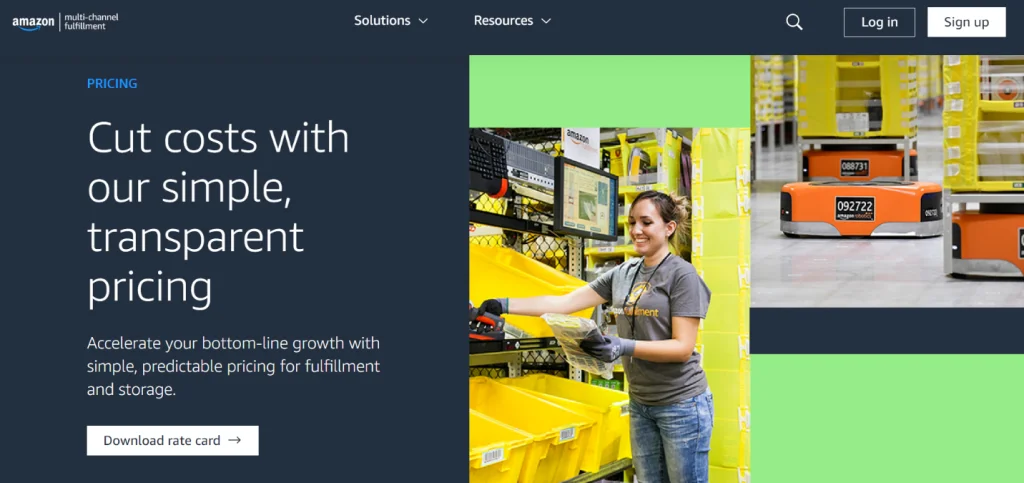
You can also use Amazon FBA to fulfill orders made on another platform, such as your own Shopify or WooCommerce-based store. This service, called multi-channel fulfillment (MCF), lets you take advantage of Amazon’s fulfillment centers in exchange for a fee. You can choose from three types of fulfillment options: Standard (3 days), Expedited (2 days), and Priority (1 day).
This is commonly used by sellers who are present in other online channels, like eBay or their own websites. Of course, the fees are higher, but you can enjoy the same hassle-free fulfillment and storage experience as selling within Amazon.
Fulfillment fees start at $4.75 per unit. Here’s an overview of Amazon’s Multi-Channel Fulfillment Pricing:

Storage fees start at $0.83 per cubic foot. Here’s a sample table:
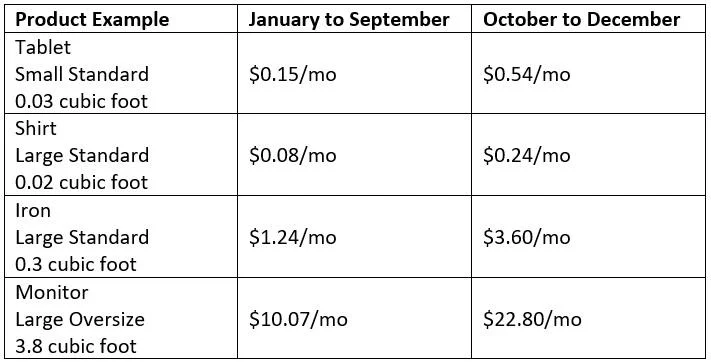
You can also enjoy up to 50% discount on multi-unit orders, i.e., multiple products, regardless of sizes, shipped to one account.
Miscellaneous Amazon FBA Fees
In addition to the core fees like fulfillment, storage, and referral fees, Amazon FBA sellers may encounter various miscellaneous charges. These fees can add up and impact the overall profitability of your business, so it’s essential to be aware of them and factor them into your cost calculations.
- Labeling Fees
If you need Amazon to apply barcode labels for your inventory, you can get the FBA Label Service. It costs $0.55 per item and is available for eligible products with a single scannable barcode corresponding to an ASIN in Amazon’s online catalog.
The fee will cover the cost of labeling each unit of your inventory, ensuring compliance with Amazon’s labeling requirements.
- Prep Service Fees
If your products require specialized packaging or preparation, such as bubble wrapping, poly bagging, or bundling, prep service fees may be applicable. These fees cover the cost of Amazon’s extra handling and preparation efforts to ensure your products are ready for shipment and meet their specific requirements.
Fees vary depending on your product category. For example, a standard-size sharp object will cost $1.35.
- Returns Processing Fees and Repackaging Service
Returns processing fees are charged when customers return your products to Amazon using the free return shipping offer. These fees cover the costs associated with processing and inspecting returned items and potentially refurbishing or restocking them. These fees apply to Apparel and Shoe categories but are free for items under Watches, Jewelry, Luggage, Handbags & Sunglasses categories.
Amazon can provide repacking and refurbishment services if a returned item is still sellable. Repacking is an automatic service applied to eligible items and usually includes only replacing the poly bag, re-boxing the thing, or changing the bubble wrapping.
Refurbishment is an optional service and can range from re-taping, re-gluing, and re-stapling boxes to steaming and removing stains and odors for apparel.
- Removal Order Fees and Disposal Order Fees
If you request Amazon to return or dispose of your inventory stored in their fulfillment centers, removal order fees and disposal order fees will apply. These fees cover the cost of retrieving and handling your items for removal. Charges vary per product category, weight, and dimension.
It takes around 90 days to process a removal order and return these items to you.
- Unplanned Service Fees
If your item arrives at an Amazon fulfillment center and they don’t comply with Amazon’s FBA policies or requires additional handling, then Amazon will charge an unplanned services fee. Charges range from $0.20 to $2.00 depending on the severity of the problem, i.e., missing barcode labels or lack of enough bubble wrap.
When sending items to Amazon, ensure that you comply strictly with Amazon’s FBA policies to avoid these unexpected service fees.
Being Profitable with Amazon FBA
With so many fees to remember, pricing an item to be profitable can sound intimidating and complex. Amazon makes this easy by providing free estimating tools like its Revenue Calculator, which estimates fees and profit based on fulfillment channels.
Threecolts, a comprehensive cloud suite of Amazon Tools, also offers various solutions to help maintain your profitability as an Amazon FBA seller. One such tool is the Refund Sniper, which automatically analyzes your Amazon FBA inventory to ensure every item is accounted for. It then requests refunds from Amazon for any missing or damaged merchandise.
Despite charging many fees, Amazon FBA offers multiple advantages that make it worthwhile for beginner and experienced sellers. By understanding these fees, you can make better pricing decisions and optimize your operations to ensure a profitable Amazon business.
Source from Threecolts
The information set forth above is provided by Threecolts independently of Alibaba.com. Alibaba.com makes no representation and warranties as to the quality and reliability of the seller and products.
